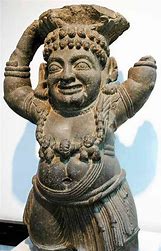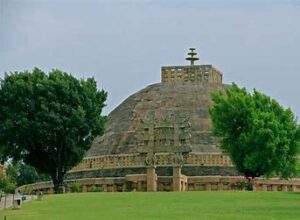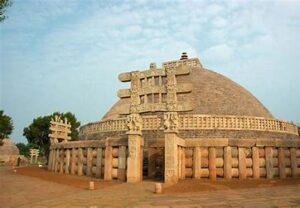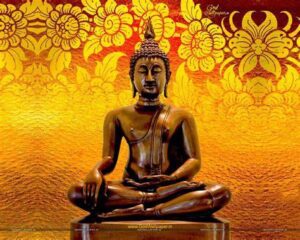Best Article Mauryan art and architecture 2024
This is part 3of ancient art and architecture. there we will know about of Mauryan art and architecture. We completed two parts, With the arrival of Buddhism and Jainism, part of the Shramana tradition, the religious and social landscape of the ganga valley began to change. Both the religious opposed the “varna system” and “caste system” of the Vedic era, hence they received the protection of those kshatriya rulers who had become aware of Brahmanical supremacy. As the Maurya established their power, a clear Demarcation and can be seen between Mauryan art and architecture and sculpture developed under state patronage and individual initiative
Mauryan art and architecture can be classified as follows.
The Mauryan art and architecture
Mauryan ‘s period is divided into two part: 1. Court art (darbari kala)2, (popular art) individual initiative. The Maurya Empire was the first ” powerful” empire to come to power in India, the capital at Pataliputra and the palaces at Kumhar were built to reflect the. Grandeur of the Maurya Empire. Chandragupta Maurya’s place was inspired by the Achaemenian places of Persepolis in Iran; its main construction material was wood.
Megasthenes describe this place as one of the greatest creations of mankind. Similarly, Asoka’s place at the Kumrahar was also a huge structure. It had a tall central pillar and was a three Storey wooden structure. The walls of the place were decorated with this carving and sculpture.
Mauryan art and architecture During the reign of Asoka, inscriptions on pillars- as state symbols or to commemorate victories in battle became increasingly important. They also used pillars to propagate state sermons.
averaging 40 feet high,. These pillars were usually made of chunar sandstone and consisted of a shaft and capital in this the long shaft formed the base, which was made of a single block. Of stone of a monolithic stone on top of this ahead or capital was placed in the shape of Lotus or an hourglass. National emblem-The Abacus, and animal part of the Sarnath piller is the official national emblem of India.
In the top panel of the Sarnath piller, four animals are depicted representing the four Directions- horse (west), the elephant (east), the Bull (South) and the lion (North).
These animals seem to be chasing each other endlessly, turning the wheel of existence.
The elephant represents Queen Maury’s dream and the white elephant entering her womb. The bull represent the Zodiac sign of vasha,the month In which Buddha was born. Ashva kathak refers to the horse which the buddha used to move away from the kingdom. leo represents attainment of knowledge. The word Satyam Eva Jayate, taken from the mundaka Upanishad, meaning ‘truth’ always triumphs’, are inscribed below the inscriptions in Devanagari script.The four lions symbolize the Buddha spreading the dhamma in all directions.
Stupas were burial mounds prevalent in india since the vedic period.
These are traditional displays of funerary urns in which the remains and ashes of the deceased were placed.
During the reign of Asoka Stupa, art reached its zenith about 84000 stupas were built during his reign. Sattupas inspired by the vedic tradition were popularised by plants. The eights of buddha in his tomb there were relics of buddha while nine stupas in which basically these the remains were kept. Ninth stupas were built after his death.
The sanchi stupas of madhya pradesh is the most famous among ashoka’s stupas piprahwa stupa is the oldest stupas in uttar Pradesh. The nine stupas built after the death of buddha are raj Griha, Veishali, Kapilvastu, alakapp, ramgram,vethapida, pava, kushinagar and pipli van.
Popular art: In Addison to state patronage, cave architecture art also found expression through individual efforts in sculpture and pottery. These are classified together as popular forms of Mauryan art and architecture
Cave Architecture: The period so the emergence of rock-cut cave architecture. During the Maurya art and architecture period, Jain and Buddhist monks commonly used these caves as viharas or places of residence. while the early caves were used by the ajivakas, they later became popular as Buddhist monasteries.
The caves during the Maurya art and architecture period were characterized by highly polished interior walls and decorated entrances.
Example: The caves of Barber and Nagarjuna in Vihar were built during the reign of Ashoka and his grandson Dasharatha in the 3rd century BC.
Caves of Nashik.
Nastik caves are a group of 24 buddhist caves, also known as ‘Pandava leni’. It was built between the first century BC to the third century AD and belongs to the hinayana sect.
Later the influence of Mahayana art and architecture sect can also be seen on these caves. Within the Hinayana sect, the presence of the buddha Is depicted through the use of motifs and symbols such as thrones and footprints, and later, also made in these caves which represent the influence of Mahayana Buddhism. The site also shows an excellent system of water management by cutting it out of solid rocks. Indicated by the presence of ponds created.
Sculpture: Sculpture were mainly used for stupa decoration, architrave and medhi and as a form of religious expression.
Two famous sculptures of the Maurya period are of yaksha and Yakshini.
She was revered in all three religions (Jainism, Hinduism and Buddhism).
The oldest mention of Yakshini is found in the Tamil work silappadikaram. Similarly, all the Jain tirthankaras were related to Yakshini.
Pottery:
The pottery of the Maurya art and architecture period is known as northern black polished ware (NBPW) or painted grey ware. They are characterized by black colour and high lustre and were commonly used as luxury items. These are often referred to as the highest level items.
Post mauryan art.
After The fall of the Mauryan Empire in the 2nd century BCE, small dynasties emerged in different parts of India.
Among them, Shunga, Kanva, kushan and Shaka were prominent in the north, while. Satavahana, Ikshvaku were prominent in southern and western India. Abhir and vakataka gained fame.

Similarly, the religious scene saw the emergence of brahmin sects such as Shiva, Vaishnavism and shavatism. At the same time, the period also began to reflect the changing- socio political scenario. Architecture continued in the form of the rack-cut caves and stupas, but the kutch dynasties also introduced some unique features of their own.
Rock cut caves
This period saw the development of the two types of rock caves, namely chaitya and vihar. Example: chaitya of karta , ajanta caves {29 caves—25 viharas +chaityas} etc.chaityas were mainly quadrangular chambers with flat roofs and were used as prayer halls. These caves also had open courtyards and walls made of stone and mortar to protect them from rain. These were decorated with human and animal figures.

Udayagiri and Khandagiri caves. Odisha
They were built under Kalinga King kharavela in the first -second century BC Near present -day. Bhubaneswar. The cave complex has both man-made and natural caves. in Mauryan art and architecture They were probably built for the residence of Jain monks. There are 18 caves in udayagiri and 15 caves in khandagiri.. Udayagiri caves are famous for the Hathigumpha inscriptions which was engraved in brahmi script. The inscription begins with the ‘Jaine Namokar mantra’and throws light on various military campaigns Undertaken by King kharavela. ranigumpha in a two-storey cave and has some beautiful sculptures .

Stupa
In the post Maurya art and architecture period, stupas became larger and more ornate, stone started being used more and more in place for wood and bricks. in Mauryan art and architecture The shunga dynasty began the construction of toranas as beautifully decorated gateways to stupas. the pylons were curved with intricate figures and patterns. These are evidence of Hellenistic or Greek influence. Example: stupa of bharhut in Madhya Pradesh, Torana of Stupa, of sanchi,etc.

Sculpture Art.
During this period, Mauryan art and architecture three major styles of sculpture namely Gandhara, Mathura and Amravati styles emerged at various places.
Gandhara style of Mauryan art and architecture
The art style flourished in modern Peshawar and the area along the western borders of Punjab near Afghanistan. The Greek invaders brought with them Greek and Roman Mallik traditions which influence the local tradition of the region. The gandhara style also came to be known as the Greco Indian style of art. The Gandhara style developed in two phases from 50 BC to 500 ad. The early style is known for its use of blue- grey sandstone, while the latter style used clay and plaster to create sculpture. in Mauryan art and architecture The statues of Buddha and. bodhisattvas are based on Greco-Roman deities and resemble those of apollo
Mathura style of Mauryan art and architecture
The Mathura style developed along the banks of the Yamuna River in the period between the 1st and 3rd century AD. Mathura style sculptures were influenced by stories and image from all three religions of the time, {Buddhism, Hinduism and Jainism]. These sculptures are based on samples of yaksha sculpture found during the Mauryan art and architecture period.
The Mathura style showed impressive use of symbols in the sculpture, Hindu deities were demonstrated using there are Ayudha {weapons and equipment} For example, shiva is shown is through Linga and mukhalinga. Similarly, the halo round the buddha’ s head is larger than in the. gandhara style and is the ornament with geometric patterns. That buddha is surrounded by two bodhisattvas {padmapani holding a lotus and vajrapani holding a thunderbolt}.
Amravati style in Mauryan art and architecture
In the southern part of India, the Amravati style developed along the banks of the Krishna river under the patronage of the Satavahana rulers, where the other two styles emphasised single figures. On the other hand, in Amravati style more emphasis was laid on the used of dynamic figures or narrative art. 3 tribhanga posture i.e. body with three inclinations has been used extensively in the sculpture of this style.
Greek art and Roman art in Mauryan art and architecture
There are some differences between the Greek and Roman style and the Gandharan style in Mauryan art and architecture integrates both styles. The idealistic style of the Greeks is reflected in muscular depiction of gods and the other humans depicting strength and beauty. Many of the Greek Parthenon sculptures of the Greek mythological figures .Were made using marble. On the other hand, the Romans used art for ornamentation and decoration. Roman art exhibits realism and depicts real people and major historical events. The Romans used concrete in their sculpture. The Romans were also famous for their wall paintings.
Various posters related to Buddha in Mauryan art and architecture
One of the most common poses found in buddha statues. It depicts a buddha in dhyana mudra with his left hand palm straight in his lap and his right and touching the earth poster is commonly associated with the blue- coloured buddha known as akshobhya.

Meditation pose
significance- the call of the earth to bear witness to the truth and the represent
s the moment of buddha’s enlightenment. This posture indicates meditation yoga and is also called samadhiya yoga posture. It depicts a buddha with both hands in the lap on the right hand with outstretched figures placed on the palm of the left hand . In many sculptures thumbs or both hands are shown touching each other’ Thus farming a triangle. It signifies the attainment of particle protection. This posture r was used by buddha during his final meditation under the bodhi tree.
Distribution currency
The posture indicates teaching and discussion of intellectual debate. The knuckles of the thumb and index finger touch each other farming a circle. The right hand is placed at shoulder level and the left hand is placed at pelvic level, in the lab with the palm facing upward. It Significance That teaching phase of preaching in Buddhism. the circle formed by the thumb and forefinger maintains a continuous flow of energy’ as it has no beginning or end, only completeness.
Abhaya mudra in Mauryan art and architecture of buddha
The poster showed fearlessness and is a symbol of strength and inner beauty. The right hand with the bent arm is raised upward to shoulder height. The palm of the right hand focuses outward and the fingers are straight and joined. The left arm hangs down next to the body.
dharmachakra mudra in Mauryan art and architecture of buddha
Its meaning is to rotate the wheel of dharma or rule, that is to set the wheel of dharma in motion. Both hands are involved in the posture. The right hand is placed on the chest with the palm facing outwards. A mystical circle is formed by joining the knuckles of the hand are finger and thumb.The left hand is turned inward and the index finger and thumb of the hand are joined to touch the circle of the right hand .the sentiment was displayed by lord buddha when he gave the first sermon to a companion after the enlightenment in the Deer Park of Sarnath.
Anjali Mudra in Mauryan art and architecture of buddha
A symbol of grating, devotion and adoration .both hands are closed on the chest, Palm and fingers are joined perpendicular to each other. This is the common gesture used to greet people in India. This posture symbolise salutation to the superior.and is considered a sign of respect with deep respect. It is believed that the True Buddha does not make this hand posture and this posture should not be shown in buddha statues. the mudra is for bodhisattvas.
Uttarabodhi mudra in Mauryan art and architecture of buddha
It means supreme knowledge. Both hands are placed on the chest, joining all the fingers except the index finger together, extending the index finger straight up and touching each other. This posture is known to bring energy to the person . This posture is a symbol of perfection. Shakyamuni Buddha is presented in this posture.
Karan mudra in Mauryan art and architecture of buddha
This mudra indicates protection from evil. The arm is extended either horizontally or vertically with the palm facing forward. The thumb presses the middle to bent fingers but the index finger and little finger are raised straight up it symbolized expelling negative energy the energy generated by this mudra helps in removing obstacles like illness or negative thoughts
Vajira mudra in Mauryan art and architecture of buddha
This mudra indicates knowledge. This currency is more known in Korea and japan. this poster, the erect index finger of the left hand is placed in the first of the right hand . This pose is also seen in mirror -reverse form.
Varad mudra in Mauryan art and architecture of buddha
This mudra indicates kindness, comparison or acceptance of wishes . the right hand is the natural position, with the palm of the open Hand facing outward toward the viewer. If standing, the hand is kept slightly extended forward.
Conclusion
Welcome to Indra Digi is a platform where you can get information about the vast heritage of Mauryan art and architecture’ Mauryan art and architecture was beautiful. Here you see the endless art and cultural wonders of India and celebrate the past, present and future of this magnificent heritage.
thank you
Comments
Post a Comment